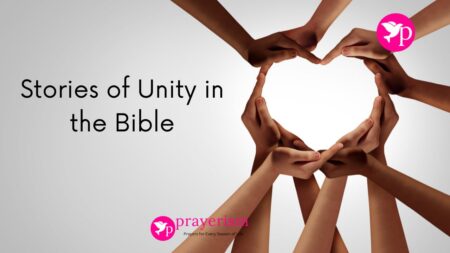In the grand tapestry of human existence, the Bahá’í teachings posit a compelling narrative of unity, illuminating the interconnectedness of all humanity. This profound perspective beckons individuals to recognize their shared essence, transcending mere differences of race, culture, and creed. The stories of unity within the Bahá’í framework serve not only as spiritual allegories but also as practical guidance for fostering harmonious relationships in a fractured world. Each narrative unveils layers of meaning, inviting introspection and collective growth.
The essence of unity can be likened to a multi-hued mosaic—a singular masterpiece crafted from diverse and unique pieces. Each tile, with its distinct colors and textures, contributes to the overall beauty of the whole. The Bahá’í teachings, through varied narratives, reinforce the idea that while individuality is cherished, it is within the embrace of unity that humanity discovers its true potential. This principle resonates deeply in an age often characterized by division and discord.
One of the cornerstone narratives within the Bahá’í teachings is that of the “Most Great Peace,” which envisions a world where tranquility prevails. This concept is not merely aspirational; it embodies a call to action, requiring individuals to shift their perspectives from insular tendencies to inclusive mindsets. The metaphor of the “Global Family” encapsulates this vision; just as members of a family are bound by kinship, all humans are interconnected as members of one global community. By nurturing this familial frame of reference, barriers erected by misunderstandings and prejudices can be dismantled.
Integral to the narrative of unity is the concept of the oneness of humanity, vividly depicted in the Bahá’í writings. This tenet posits that there is a singular source of creation, implying that all human beings share a divine lineage. Each story interwoven within this ideology pulsates with the rhythm of compassion and shared responsibility. For instance, the narrative of the “Two Wings” metaphorically elucidates the necessity of combining the spiritual and material facets of life to achieve true advancement. The balancing of these two elements fosters a society where individuals flourish holistically, reducing strife and enhancing cooperation.
Investigation into historical narratives within the Bahá’í framework reveals the profound impact of cooperation on social evolution. The story of the “Universal House of Justice,” the governing body of the Bahá’í community, illustrates a model of democratic governance wherein decisions are made collectively for the benefit of all. This institution, set in motion by the teachings of Bahá’u’lláh, exemplifies the synergy achievable when diverse perspectives converge towards a common goal. It embodies a metaphorical beacon, guiding humanity away from polarization and towards collaborative problem-solving.
Another poignant narrative centers on the theme of service to humanity. This principle reflects the idea that one’s purpose transcends personal aspirations; instead, it is intrinsically linked to the wellbeing of others. The parable of the “Sower and the Seed” metaphorically articulates the importance of nurturing seeds of goodness within society. As these seeds germinate, they yield a bountiful harvest of compassion, empathy, and teamwork. Within the Bahá’í context, this narrative champions altruistic endeavors, urging individuals to cultivate a spirit of selflessness, thereby fostering a united front against challenges faced by the global community.
The narrative of education also plays a crucial role in the Bahá’í teachings of unity. It posits that enlightenment is a collective pursuit, vital for the elevation of society. The story of “The Orchard” serves as an allegory for the cultivation of minds. Just as an orchard flourishes when attended to collectively—pruned, watered, and harvested—individuals thrive when educated together, learning from one another’s experiences. This narrative underscores the significance of universal access to education, as it lays the groundwork for a more equitable and united world.
As we consider the broader implications of Bahá’í narratives, the metaphor of the “Web of Humanity” emerges, symbolizing the intricate and delicate connections that link every individual to another. These connections, akin to a spider’s web, illustrate the strength that arises from unity and interdependence. The teachings advocate for a conscious effort to weave threads of understanding and collaboration, asserting that true progress is achieved through mutual support and recognition of shared humanity. The interstitial spaces between individuals are as vital as the threads themselves; they represent opportunities for dialogue, respect, and empathy.
In contemplation of these narratives, it becomes evident that the Bahá’í teachings offer profound insights into the human experience. They challenge individuals to transcend superficial differences, fostering a robust framework for unity in diversity. The teachings serve as a poignant reminder that while individual stories may differ, the overarching narrative of human existence is one of interconnectedness and communal responsibility.
Ultimately, the narratives of unity, as espoused by the Bahá’í teachings, illuminate a path toward collective advancement. They call for an awakening of the human spirit, encouraging individuals and communities to embark on a journey characterized by cooperation, service, and understanding. In this intricate web of humanity, each individual is empowered to contribute their unique essence toward the realization of a harmonious world.
